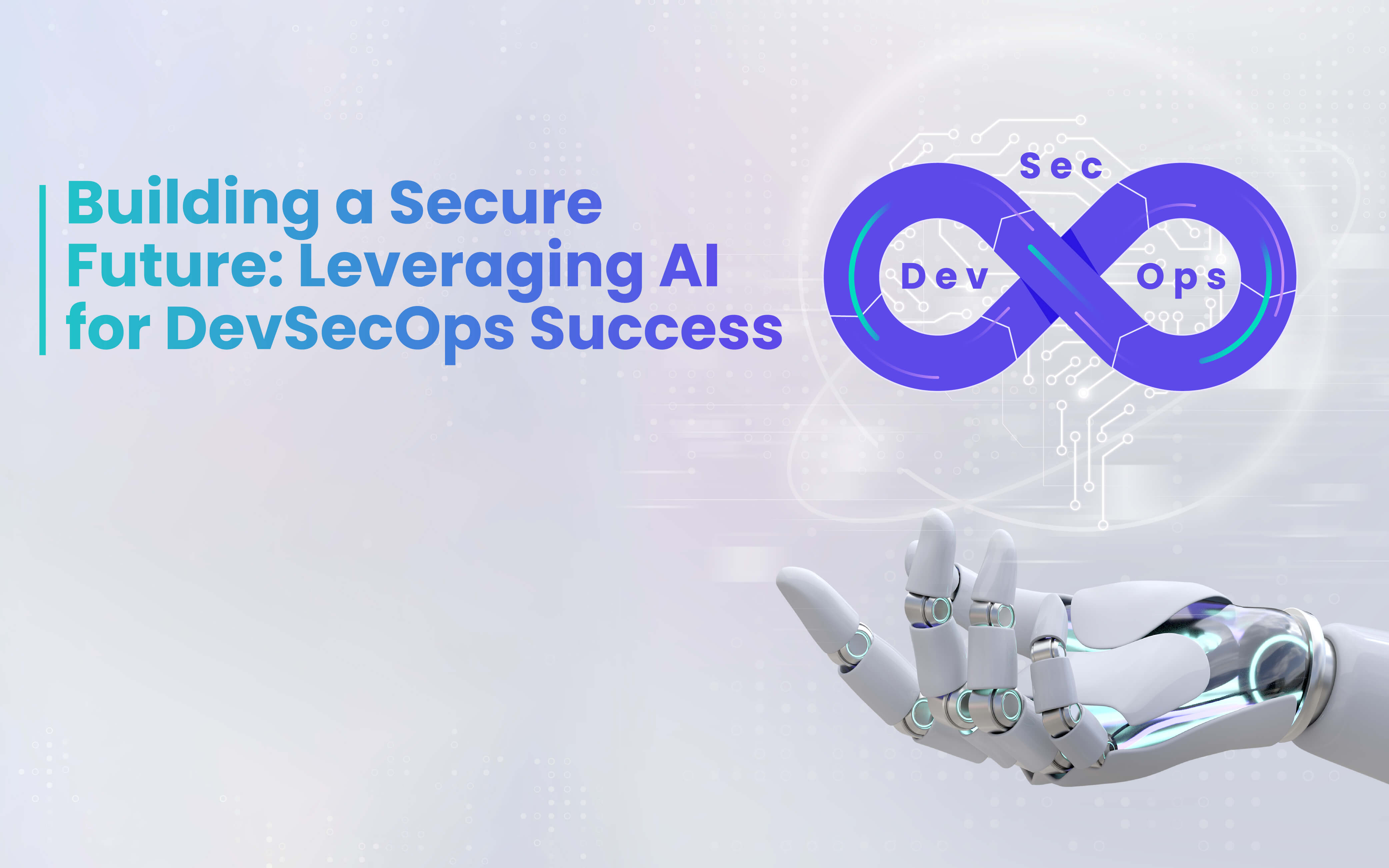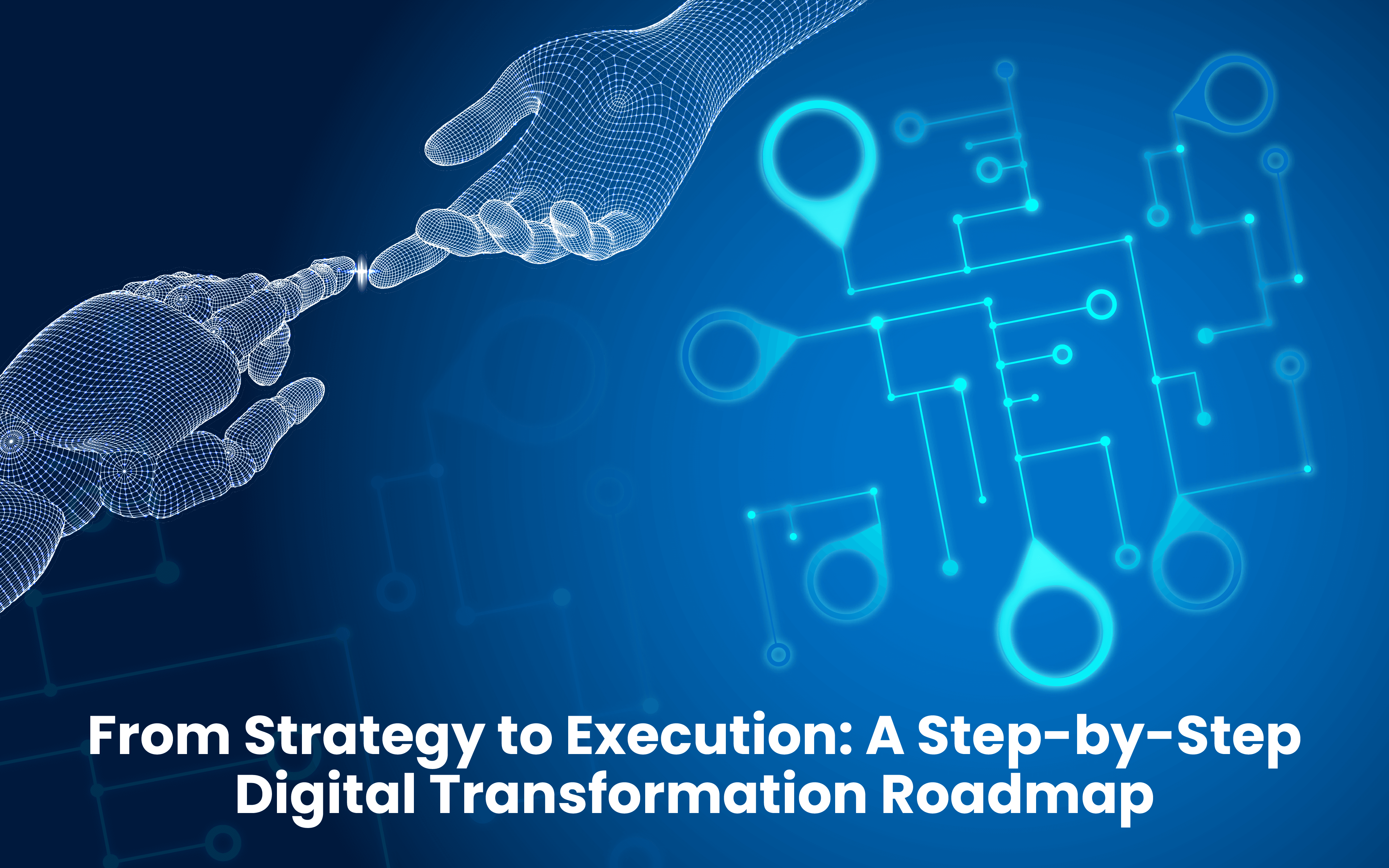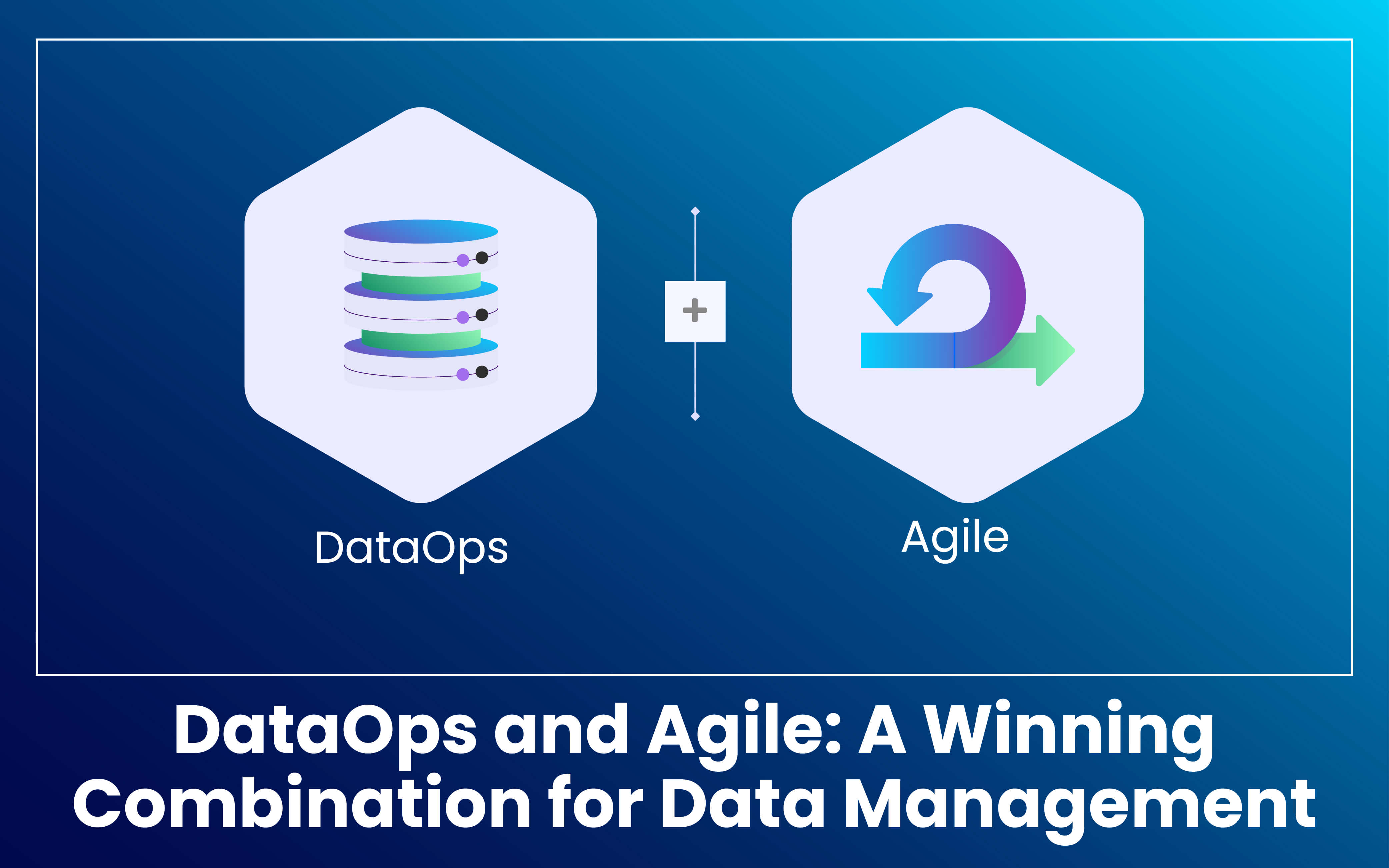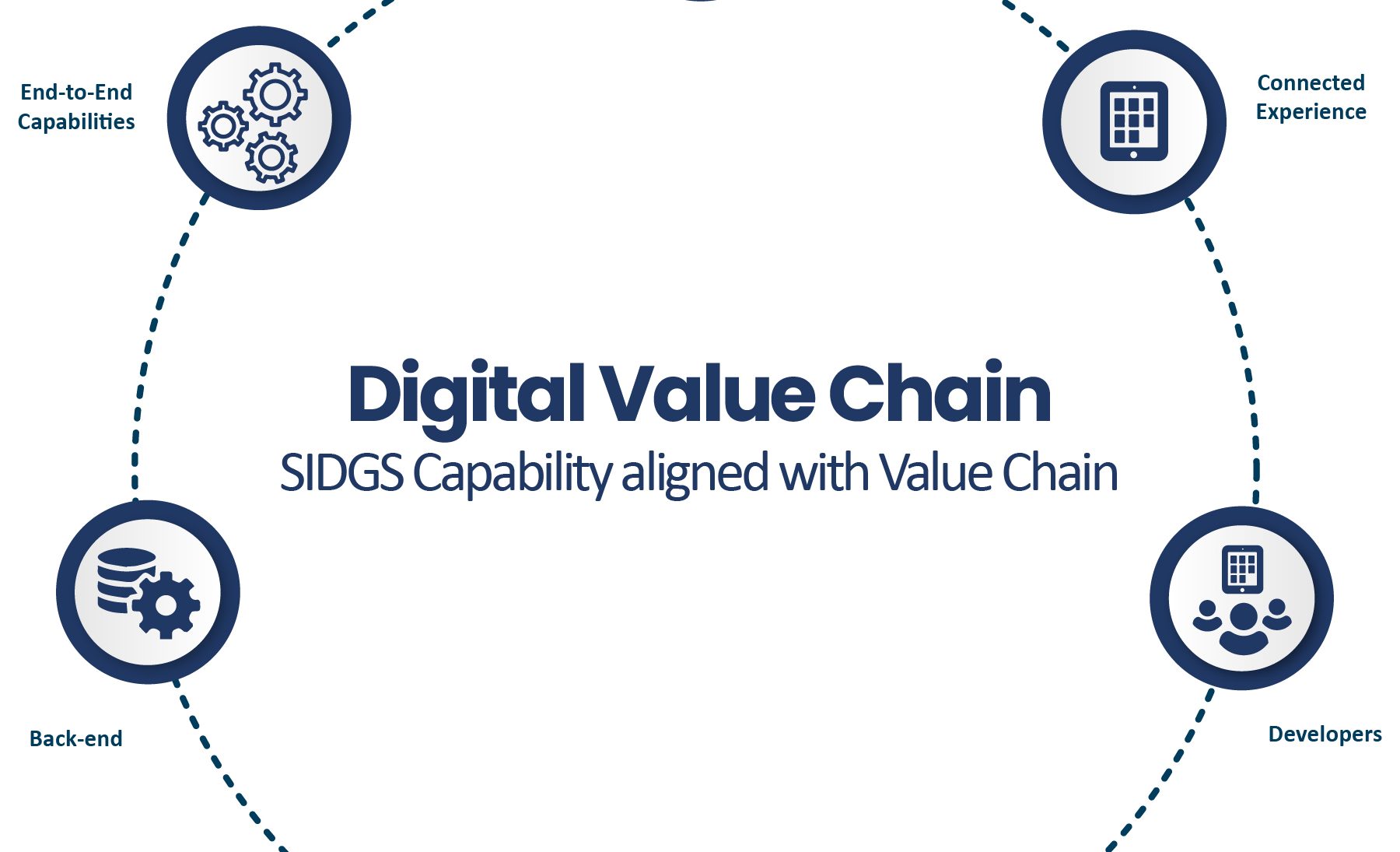Blogs
To know about all things Digitisation and Innovation read our blogs here.
DevOps
Building a Secure Future: Leveraging AI for DevSecOps Success
SID Global Solutions
19 June 2023

Introduction
In today’s digital landscape, where security threats are constantly evolving, organizations are seeking innovative approaches to secure their software development processes. DevSecOps, the integration of development, security, and operations, has emerged as a powerful methodology to ensure the security and reliability of software throughout its lifecycle. Now, with the advent of Artificial Intelligence (AI), DevSecOps has gained new dimensions. This comprehensive guide explores how organizations can leverage AI to enhance their DevSecOps practices, fortify their security measures, and pave the way for a secure future.
Also Read: Securing Your Supply Chain: A Deep Dive into DevSecOps Implementation
Understanding AI in DevSecOps
Defining AI in DevSecOps: Artificial Intelligence (AI) refers to the ability of computer systems to simulate human intelligence and perform tasks that traditionally require human intelligence, such as problem-solving, pattern recognition, and decision-making. In the context of DevSecOps, AI involves leveraging advanced algorithms and machine learning techniques to enhance the security and efficiency of software development processes.
AI in DevSecOps encompasses various applications, including automated threat detection, intelligent incident response, data analysis, and decision-making. It enables organizations to streamline security practices, identify vulnerabilities, and respond to security threats in real-time.
The Role of AI in the Software Development Lifecycle: AI plays a crucial role throughout the software development lifecycle (SDLC), enhancing security measures and driving efficiency. Here are some key areas where AI contributes to each phase of the SDLC:
- Requirements Gathering: AI can assist in analyzing and prioritizing security requirements based on historical data and threat intelligence, ensuring that security considerations are embedded from the beginning.
- Design and Development: AI can facilitate secure coding practices by providing automated code review, identifying potential vulnerabilities, and suggesting security best practices. It can also aid in the creation of secure architecture and design patterns.
- Testing and Quality Assurance: AI-driven testing tools can automatically generate test cases, perform code analysis, and simulate various attack scenarios to uncover security weaknesses. It helps in reducing manual effort and improving the effectiveness of security testing.
- Deployment and Operations: AI automates deployment processes, ensuring secure and consistent configurations across environments. It can monitor system behavior, detect anomalies, and trigger automated responses to mitigate security incidents.
AI-Driven Automation in DevSecOps: Automation is a critical aspect of DevSecOps, and AI further enhances this automation by providing intelligent decision-making capabilities. AI-driven automation in DevSecOps includes the following:
- Continuous Integration and Continuous Delivery (CI/CD): AI can automate build, test, and deployment pipelines, allowing for faster and more reliable software delivery. It improves efficiency by automatically detecting and resolving conflicts, running tests, and deploying applications securely.
- Incident Response and Remediation: AI-powered Security Orchestration, Automation, and Response (SOAR) platforms can automate incident response workflows. They can identify security incidents, initiate predefined response actions, and even autonomously remediate certain security issues.
Also Read: The Future of DevOps: How AI is Shaping Transformations
Benefits of AI in DevSecOps
- Improved Threat Detection: AI algorithms can analyze vast amounts of security data and identify patterns indicative of security threats. It enables faster and more accurate detection of potential vulnerabilities, malware, and suspicious activities.
- Enhanced Efficiency: AI-driven automation reduces manual effort and accelerates processes such as code review, testing, and incident response. It allows DevSecOps teams to focus on more complex and strategic tasks.
- Proactive Risk Management: AI enables predictive analytics, allowing organizations to identify potential risks and vulnerabilities before they are exploited. It empowers proactive risk management by providing insights into emerging threats and recommending preventive measures.
- Continuous Compliance Monitoring: AI can assist in monitoring compliance with security standards and regulations. It can analyze code and configurations to ensure adherence to security policies, flagging any deviations and suggesting corrective actions.
- Improved Decision-Making: AI algorithms can analyze large volumes of security-related data, providing valuable insights for decision-making. It enables security teams to make informed choices regarding incident response, prioritization of vulnerabilities, and security strategy.
Strengthening Security with AI-Driven Threat Detection
AI-Enabled Vulnerability Assessment and Management: AI plays a critical role in identifying and managing vulnerabilities within software systems. By leveraging AI techniques, organizations can strengthen their vulnerability assessment and management practices. Here are two key areas where AI can be applied:
- Leveraging AI for Dynamic Scanning and Penetration Testing: AI can enhance the effectiveness of dynamic scanning and penetration testing processes. AI algorithms can automatically analyze the results of these tests, identify vulnerabilities, and prioritize them based on severity. This reduces manual effort and provides more accurate and comprehensive vulnerability assessment.
- Using AI for Code Analysis and Static Application Security Testing (SAST): AI-powered code analysis tools can analyze source code to identify potential security flaws and vulnerabilities. Through static application security testing (SAST), AI algorithms can detect issues such as insecure coding practices, input validation vulnerabilities, and potential backdoor access points. This helps in identifying and fixing security issues early in the development process.
Also Read: Harnessing the Power of AI: Enhancing Ansible Automation for Next-Level Efficiency
Real-Time Anomaly Detection and Intrusion Prevention: AI can strengthen security by enabling real-time anomaly detection and intrusion prevention mechanisms. These AI-driven techniques empower organizations to identify and respond to security threats promptly. The following approaches highlight the role of AI in real-time threat detection:
- AI-Driven Behavioral Analytics: By analyzing patterns of user behavior and system activities, AI algorithms can establish baseline behavior and identify anomalies that may indicate potential security breaches. Behavioral analytics can detect unusual user activities, unauthorized access attempts, and anomalous network traffic, enabling swift response to potential threats.
- AI-Based Intrusion Detection Systems (IDS) and Intrusion Prevention Systems (IPS): IDS and IPS systems equipped with AI capabilities can continuously monitor network traffic, system logs, and security events. AI algorithms can quickly analyze and correlate this data to identify potential threats and take proactive measures to prevent them. This includes blocking suspicious network traffic, alerting security teams, or even autonomously mitigating attacks.
AI-Powered Automation for Secure Software Development
AI-Driven Continuous Integration and Continuous Delivery (CI/CD): AI-driven automation enhances the efficiency and security of the continuous integration and continuous delivery (CI/CD) processes. It enables organizations to streamline software development, testing, and deployment while maintaining a robust security posture. Here are two key areas where AI can be applied:
- Automated Build, Test, and Deployment Pipelines: AI can automate various stages of the CI/CD pipeline, including code compilation, testing, and deployment. AI algorithms can analyze code changes, identify dependencies, and automatically trigger the appropriate build, test, and deployment processes. This reduces manual effort, accelerates the software delivery cycle, and ensures that security measures are consistently applied throughout the pipeline.
- AI-Enabled Release Management and Rollbacks: AI can assist in release management by analyzing historical data, user feedback, and performance metrics to determine the optimal release strategy. AI algorithms can predict the impact of a new release, identify potential risks, and recommend rollback strategies if necessary. This ensures that only secure and stable releases are deployed, minimizing the risk of security vulnerabilities in production environments.
Also Read: The Power Duo: Why SRE and DevOps Are Essential for Modern Platform Engineering?
Intelligent Incident Response and Remediation: AI-powered automation can greatly enhance incident response and remediation processes within DevSecOps. It enables organizations to detect, respond to, and mitigate security incidents in a timely and efficient manner. The following approaches highlight the role of AI in incident response and remediation:
- AI-Powered Security Orchestration, Automation, and Response (SOAR): AI-based SOAR platforms can automate incident response workflows by integrating various security tools and technologies. AI algorithms can analyze incoming security alerts, correlate them with threat intelligence data, and orchestrate automated response actions. This includes isolating affected systems, blocking malicious IP addresses, and initiating forensic investigations. By automating incident response, organizations can reduce response times and minimize the impact of security incidents.
- Self-Healing Systems and Auto-Remediation: AI can enable self-healing systems that automatically identify and mitigate security issues. By continuously monitoring system behavior, AI algorithms can detect anomalous activities, unauthorized changes, or potential security breaches. When a security issue is identified, AI-powered systems can autonomously trigger remediation actions, such as rolling back to a known secure state or patching vulnerabilities. This proactive approach to security minimizes manual intervention and reduces the window of vulnerability.
Enhancing Threat Intelligence and Risk Assessment
AI-Enhanced Threat Hunting and Intelligence Gathering: AI plays a vital role in enhancing threat intelligence and gathering actionable insights to mitigate security risks. By leveraging AI techniques, organizations can proactively identify and respond to emerging threats. Here are two key areas where AI can be applied:
- AI-Driven Cybersecurity Information Sharing Platforms: AI-powered platforms facilitate the sharing and analysis of cybersecurity information across organizations and industries. These platforms can automatically collect and aggregate threat intelligence data from various sources, such as security feeds, public databases, and dark web monitoring. AI algorithms can then analyze this data, identify patterns, and provide actionable intelligence to security teams, enabling them to stay ahead of evolving threats.
- Automated Threat Intelligence Analysis and Correlation: AI can automate the analysis and correlation of threat intelligence data, enabling faster and more accurate identification of potential risks. AI algorithms can process large volumes of data, including indicators of compromise (IOCs), malware signatures, and network logs. By correlating this data with internal security events, AI can identify potential threats, determine their severity, and provide recommendations for effective risk mitigation.
AI-Enabled Risk Assessment and Mitigation: AI empowers organizations to conduct more effective risk assessments and implement proactive mitigation strategies. By leveraging AI-driven risk assessment techniques, organizations can better understand their security posture and prioritize risk mitigation efforts. The following approaches highlight the role of AI in risk assessment and mitigation:
- Predictive Analytics for Risk Evaluation: AI algorithms can analyze historical data, system logs, and security events to identify patterns and predict potential security risks. By utilizing predictive analytics, organizations can proactively identify areas of vulnerability and allocate resources to mitigate risks before they materialize. This enables more effective risk management and resource allocation, reducing the likelihood and impact of security incidents.
- AI-Driven Compliance Monitoring and Reporting: AI can assist organizations in monitoring compliance with security standards and regulations. AI algorithms can automatically analyze configurations, code, and system logs to ensure adherence to security policies and regulatory requirements. By identifying compliance gaps and potential vulnerabilities, organizations can take corrective actions and generate comprehensive compliance reports efficiently.
Also Read: Unlocking Resilience: The Power of Multi-Cloud and Multi-Region Deployment
Ethical Considerations and Challenges in AI-Engineered DevSecOps
Ensuring Ethical and Responsible Use of AI in Security Practices: The adoption of AI in DevSecOps raises ethical considerations that must be addressed to ensure responsible and secure usage. Organizations should consider the following aspects:
- Data Privacy and Confidentiality: AI-driven security practices rely on large volumes of data, including sensitive user information and organizational data. It is crucial to implement robust data privacy measures, including encryption, access controls, and anonymization techniques, to protect privacy and maintain confidentiality.
- Transparency and Explainability: AI algorithms and models used in DevSecOps should be transparent and explainable. It is essential to understand how decisions are made, especially in critical security scenarios. Explainable AI models enable better accountability, risk assessment, and debugging of potential biases or errors.
- Bias and Fairness: AI algorithms can inherit biases present in training data, potentially leading to unfair treatment or discriminatory outcomes. Organizations must strive to mitigate bias by using diverse and representative training datasets and regularly monitoring for biases in AI-driven security practices.
- Human Oversight and Intervention: While AI can automate certain security processes, human oversight and intervention remain crucial. Humans should have the ability to review and validate AI-generated recommendations, ensure ethical practices are maintained, and address any potential limitations or biases of AI systems.
Challenges and Limitations of AI in DevSecOps: Despite the significant benefits of AI in DevSecOps, there are several challenges and limitations that organizations need to be aware of:
- Data Quality and Bias Challenges: AI algorithms heavily depend on the quality and relevance of the training data. Inaccurate or biased data can lead to flawed decisions and compromised security. Ensuring high-quality, diverse, and representative data is crucial to mitigate such challenges.
- Skillset and Workforce Adaptation: Adopting AI in DevSecOps requires a skilled workforce that can understand and effectively leverage AI technologies. Organizations need to invest in training their personnel to develop the necessary AI skills and knowledge to maximize the potential of AI in their security practices.
- Security and Adversarial Attacks: AI-driven security systems themselves can become targets of attacks. Adversarial attacks aim to exploit vulnerabilities in AI algorithms to manipulate or bypass security measures. Organizations must be aware of these risks and continuously update and test their AI systems to ensure their resilience against such attacks.
- Ethical and Legal Compliance: As AI becomes more prevalent in DevSecOps, organizations must navigate various ethical and legal considerations. Compliance with regulations, intellectual property rights, and privacy laws is crucial to avoid legal complications and maintain ethical standards in AI-driven security practices.
Implementing AI-Engineered DevSecOps: Best Practices
Establishing a Robust Data Management Strategy: To effectively implement AI-engineered DevSecOps, organizations must establish a robust data management strategy. This includes:
- Data Collection and Preparation: Identify the types of data required for AI-driven security practices and establish processes for collecting and preparing that data. Ensure data quality, accuracy, and relevancy to maximize the effectiveness of AI algorithms.
- Data Privacy and Security: Implement strong data privacy and security measures to protect sensitive information. This includes encryption, access controls, and anonymization techniques to safeguard data throughout its lifecycle.
- Data Governance: Define clear data governance policies, including data ownership, storage, retention, and disposal. Establish processes for data access, sharing, and compliance with relevant regulations.
Selecting and Integrating AI-Driven Tools and Platforms: Selecting and integrating the right AI-driven tools and platforms is critical for successful implementation of AI-engineered DevSecOps. Consider the following best practices:
- Needs Assessment: Identify specific security challenges and requirements that can be addressed through AI. Conduct a thorough needs assessment to understand which AI-driven tools and platforms align with your organization’s objectives.
- Vendor Evaluation: Evaluate AI vendors based on their expertise, track record, and ability to meet your security requirements. Consider factors such as scalability, ease of integration, support, and long-term viability of the vendor.
- Integration and Interoperability: Ensure seamless integration of AI-driven tools and platforms into existing DevSecOps workflows. Verify compatibility with existing infrastructure, APIs, and security systems to avoid disruptions and maximize efficiency.
Cultivating a Culture of Collaboration and Learning: Successful implementation of AI-engineered DevSecOps requires a culture of collaboration and continuous learning. Here are some key practices:
- Cross-Functional Collaboration: Foster collaboration between security teams, development teams, and AI experts. Encourage open communication, knowledge sharing, and joint decision-making to leverage diverse expertise and perspectives.
- Training and Upskilling: Provide training and upskilling opportunities to build AI competencies within the organization. Develop a learning culture where employees are encouraged to stay updated on AI technologies, best practices, and emerging trends.
- Agile and Iterative Approach: Embrace an agile and iterative approach to AI implementation. Encourage experimentation, learn from failures, and continuously improve AI models and processes based on feedback and insights gained through real-world deployments.
Continuous Evaluation and Improvement of AI Models: Continuous evaluation and improvement of AI models are essential to ensure their effectiveness and adaptability. Consider the following practices:
- Performance Monitoring: Regularly monitor the performance of AI models in real-world scenarios. Collect feedback, evaluate key performance metrics, and identify areas for improvement.
- Feedback Loop: Establish a feedback loop between AI models and human experts. Encourage security analysts and developers to provide feedback on the accuracy and usefulness of AI-generated recommendations, enabling continuous refinement of AI models.
- Model Retraining and Updates: As security threats evolve, update AI models with new data and techniques. Retrain models periodically to ensure they remain effective and aligned with the latest security trends.
Also Read: DevOps Security Checklist To Safeguard Your Software Development Process
Conclusion
As security threats become more sophisticated, organizations must remain proactive in securing their software development processes. AI-Engineered DevSecOps offers a powerful approach to strengthen security measures, detect threats in real-time, and automate critical tasks. By leveraging AI for threat detection, risk assessment, and secure automation, organizations can build a secure future for their software development practices. However, it is crucial to navigate ethical considerations and challenges while implementing AI in DevSecOps. With proper planning, integration, and continuous improvement, AI can become a transformative force in the quest for DevSecOps success.









